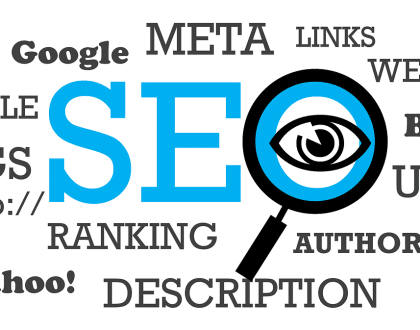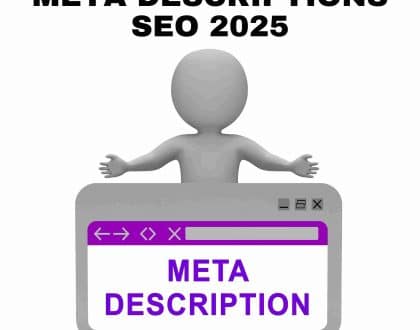Professional Web Design in 2024: A Comprehensive Guide

The Evolution of Professional Web Design in 2024 – In the fast-paced digital landscape of 2024, professional web design has become more crucial than ever. With the constant evolution of technology, user expectations, and search engine algorithms, staying ahead of the curve is essential for businesses and individuals looking to make a mark on the web. This article delves into the intricate details of professional web design in 2024, exploring the latest trends, cutting-edge techniques, and best practices to create websites that not only captivate audiences but also rank high in search engine results.
The Evolution of Professional Web Design in 2024: A Comprehensive Guide to Modern Trends and Best Practices
I. Responsive Web Design: A Fundamental Necessity
Responsive web design remains a cornerstone of modern web development. As users access websites through an array of devices, including smartphones, tablets, laptops, and desktops, it’s imperative that websites seamlessly adapt to various screen sizes. In 2024, responsive design is not just about resizing elements; it’s about creating an optimal viewing experience across all devices.
Mobile-First Approach:
- The mobile-first approach is gaining even more prominence in 2024. Designers prioritize creating a mobile-friendly version of the website first and then progressively enhance it for larger screens. This approach aligns with the growing number of users accessing the internet primarily through mobile devices.
Flexible Grids and Layouts:
- To achieve responsiveness, flexible grids and layouts are employed. CSS Grid and Flexbox have become integral tools, allowing designers to create fluid and adaptive designs. These techniques enable the seamless rearrangement of elements to fit different screen sizes without compromising the overall aesthetic.
II. Minimalism and Simplicity: Streamlining User Experience
In 2024, the trend of minimalism and simplicity in web design continues to thrive. Websites are embracing clean, uncluttered layouts that prioritize user experience and ease of navigation.
Decluttered Interfaces:
- Excessive design elements can overwhelm users. Minimalistic interfaces with ample white space not only enhance visual appeal but also guide users’ focus towards essential content. This trend aligns with the principle of “less is more,” where simplicity enhances user comprehension and engagement.
Microinteractions:
- Microinteractions play a vital role in creating an immersive user experience. In 2024, subtle animations, hover effects, and transitions are strategically integrated to provide feedback and make interactions more enjoyable. These microinteractions add a layer of sophistication to the overall design without compromising performance.
III. Dark Mode Design: Embracing Aesthetics and Functionality
Dark mode design, once considered a trend, has now become a mainstream feature in 2024. This visually appealing option not only enhances the aesthetic appeal of a website but also contributes to improved user experience, especially in low-light conditions.
Eye-Friendly Aesthetics:
- Dark mode reduces eye strain and fatigue, making it a popular choice among users. Web designers are incorporating dark color schemes, contrast ratios, and customizability options to ensure a visually pleasing experience in both light and dark environments.
Branding Opportunities:
- Dark mode isn’t just about aesthetics; it also provides unique branding opportunities. Websites can customize their dark mode color palette to align with their brand identity, creating a cohesive and memorable experience for users who opt for this mode.
IV. Advanced Typography: Elevating Visual Communication
Typography is a powerful tool for conveying information and establishing a brand identity. In 2024, web designers are pushing the boundaries of typography, exploring diverse fonts, styles, and layouts to enhance visual communication.
Custom Fonts and Variable Fonts:
- The availability of a wide range of web fonts and variable fonts allows designers to break away from conventional typefaces. Custom fonts contribute to brand distinctiveness, and variable fonts provide flexibility in adjusting weight, width, and other attributes for a more dynamic typographic experience.
Creative Text Overlays:
- Innovative text overlays, including overlapping and intersecting text elements, are gaining popularity. This creative approach adds depth to the design and allows designers to play with hierarchy and emphasis, making the content more visually engaging.
V. Artificial Intelligence Integration: Personalizing User Experiences
Artificial Intelligence (AI) is playing an increasingly significant role in web design, providing opportunities for personalization and automation.
Chatbots and Virtual Assistants:
- Chatbots and virtual assistants powered by AI are becoming standard features on websites. These tools enhance user engagement by providing instant assistance, answering queries, and guiding users through various processes. The use of natural language processing (NLP) continues to refine the conversational abilities of these AI-driven interfaces.
Personalized Content Recommendations:
- AI algorithms analyze user behavior, preferences, and history to deliver personalized content recommendations. This not only keeps users engaged but also increases the likelihood of conversions. In 2024, the sophistication of recommendation engines is growing, providing more accurate and relevant suggestions to users.
VI. Interactive and Immersive Experiences: Engaging Users on a Deeper Level
Creating an immersive and interactive web experience is a priority in 2024. Users expect more than static content they seek dynamic, engaging, and memorable interactions.
3D Elements and WebGL:
- WebGL technology enables the integration of 3D elements into websites, creating visually stunning and interactive experiences. From product showcases to storytelling, 3D elements enhance engagement and leave a lasting impression. Designers are leveraging WebGL frameworks to implement these immersive features seamlessly.
Augmented Reality (AR) Integration:
- AR is breaking new ground in web design by blending the virtual and physical worlds. In 2024, websites are exploring AR applications for product previews, virtual try-ons, and interactive storytelling. AR enhances user engagement and provides a novel way for users to interact with content.
VII. Accessibility: Inclusivity in Design
Web accessibility continues to be a critical aspect of professional web design, ensuring that websites are usable by everyone, regardless of disabilities or limitations.
Inclusive Design Principles:
- Designers are embracing inclusive design principles to create websites that accommodate users with diverse needs. This includes providing alternative text for images, ensuring keyboard navigation, and designing with color contrasts that are accessible to individuals with visual impairments.
Voice User Interface (VUI):
- The integration of voice user interfaces is on the rise, making websites more accessible to users with mobility challenges or visual impairments. VUI technology, powered by AI, allows users to navigate websites, initiate actions, and consume content through voice commands.
VIII. Cybersecurity in Web Design: Prioritizing User Trust
As cyber threats become more sophisticated, cybersecurity is a paramount concern for web designers in 2024. Establishing and maintaining user trust through secure design practices is crucial.
SSL Encryption:
- Secure Sockets Layer (SSL) encryption has become a standard feature for websites, ensuring that data transmitted between the user’s browser and the server is encrypted and secure. In 2024, SSL is not just a security measure but also a factor considered by search engines in determining search rankings.
Privacy-Centric Design:
- With growing concerns about data privacy, web designers are adopting privacy-centric design principles. This includes transparent data collection practices, cookie consent mechanisms, and clear privacy policies. Websites that prioritize user privacy are likely to gain favor both with users and search engines.
IX. SEO Strategies for 2024: Navigating Search Engine Algorithms
Search engine optimization (SEO) remains a critical aspect of web design, influencing the visibility and ranking of websites in search engine results. In 2024, SEO strategies are evolving to align with the latest algorithms and user expectations.
Core Web Vitals:
- Core Web Vitals have become a significant ranking factor in search algorithms. Focusing on metrics like page speed, interactivity, and visual stability is essential for ensuring a positive user experience and favorable search rankings.
Structured Data Markup:
- Structured data markup enhances the way search engines understand and display information from websites. In 2024, leveraging schema markup for rich snippets, FAQs, and other structured content can enhance a website’s visibility in search results.
X. Collaboration and Prototyping: Streamlining the Design Process
Effective collaboration among designers, developers, and stakeholders is crucial for delivering successful web projects in 2024. Prototyping tools and collaborative platforms play a pivotal role in streamlining the design process.
Design Systems and Component Libraries:
- Design systems and component libraries facilitate consistency and efficiency in web design. These centralized repositories of design elements, patterns, and guidelines ensure that the entire team follows a unified design language, speeding up development and reducing errors.
Collaborative Prototyping:
- Collaborative prototyping tools allow designers to create interactive prototypes that can be shared and tested with stakeholders. Real-time collaboration features enhance communication and feedback loops, resulting in a more iterative and refined design process.
Conclusion: Professional Web Design in 2024
Professional web design in 2024 is a dynamic and multifaceted discipline, driven by a combination of aesthetic trends, technological advancements, and user expectations. From responsive and minimalist design principles to the integration of AI and immersive experiences, web designers are navigating a landscape that demands innovation and adaptability.
As we move further into the digital age, the symbiotic relationship between design and technology will continue to shape the way we experience and interact with the web. Embracing these trends and best practices ensures that websites not only meet the current standards but also future-proof themselves for the ever-evolving digital landscape. Whether you are a seasoned web designer or someone exploring the field, staying informed about these trends will empower you to create websites that stand out in 2024 and beyond.
Recommended Posts

Local SEO vs. Global SEO: A Comprehensive Guide
May 14, 2025



